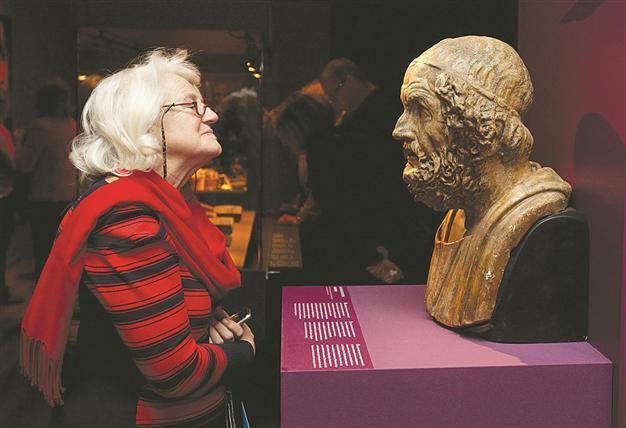Treasures of Turkey take pride of place in the world
ANKARA - Anadolu Agency

Since 2003, thousands of Turkish artworks have been sent to 125 exhibitions, 54 of which were abroad. AA photo
Turkey’s treasures continue to be seen by millions around the world, with artifacts ranging from ancient Hittite objects to the glories of the Ottoman Empire being exhibited at prestigious museums.According to information provided by the Culture and Tourism Ministry, since 2003, thousands of artworks have been sent to 125 exhibitions, 54 of which were abroad. The number of exhibitions, displaying the riches of Turkey, was eight in Germany, six in Japan and the United States, five in France and four in Spain.
Israel, Singapore, Qatar, Portugal, Sweden, Russia and China also hosted exhibitions abroad, drawing hundreds of thousands of people.
Nearly 263,000 people visited the exhibition “Turks: A Journey of A Thousand Years, 600-1600,” which was organized at the Royal Academy of Arts in Britain in 2005. The gate of the Cizre Ulu Mosque, Murad III’s Privy Chamber, Uluğ Bey’s drawer, Süleyman the Magnificent’s signature, Fatih Sultan Mehmed’s sword as well as works by master calligrapher Mehmet Siyah Kalem, were displayed for the first time in a foreign country during the exhibition.
Japan hosted the exhibition “Treasures of the Topkapı Palace – Magnificent Ottoman” in 2007.
In 2008, the “Beyond Babylon: Art, Trade and Diplomacy in the 2nd Millennium B.C.” exhibition was opened in the U.S., featuring Turkey’s role as a bridge between the East and the West. The exhibition displayed works by 15 countries. From Turkey there were 122 works such as god figures, ivory cups, vases, daggers, medallions, swords, amphora, candles, glass and stone beads.
Another exhibition in the U.S. was “Falname: The Book of Omens.” The 16th and 17th century Persian and Ottoman manuscripts received nearly 245,000 visitors in 2009.
“Anatolian Civilizations: From Neolithic Age to the Ottoman Empire,” which ended in February in China and was visited by some 165,000 people, displayed Hittite tablets, statuettes, swords, helmets, jewelries, Quranic cases and chandeliers.
Those wanting to display Turkish artifacts abroad must first file a request with the Culture and Tourism Ministry General Directorate of Cultural Heritage and Museums via the Foreign Ministry.
Committee formed
After receiving an overview of museums, an academic committee formed by the heads of archaeology and art history departments at Turkish universities gathers and makes a list of artifacts that are suitable for exhibition overseas.
A certificate is taken from the countries where the artifacts will be displayed against all types of seizure and confiscation in order to ensure that the artifacts will remain under a state guarantee. The artifacts are subsequently insured, with their file presented to the Prime Ministry for a decision by the Cabinet. Museum experts also accompany the artifacts during their journey.
















